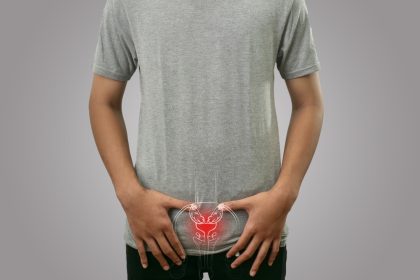The need to urinate more often than usual can be more than just an inconvenience—it frequently serves as your body’s way of signaling something isn’t right. While occasional increases in bathroom visits happen for benign reasons like increased fluid intake or temporary medication effects, persistent changes may indicate serious health conditions that require professional evaluation and treatment.
Healthcare providers emphasize that understanding the potential causes behind frequent urination helps individuals recognize when casual concern should transform into medical consultation. This knowledge empowers people to seek timely care, potentially preventing more serious complications from developing.
Urinary tract infections create urgent discomfort
Urinary tract infections rank among the most common causes of frequent urination, particularly affecting women. These bacterial infections create both discomfort and a heightened sense of urgency that drastically alters normal bathroom habits. The anatomical difference of a shorter urethra makes women especially vulnerable to these infections compared to men.
Beyond just frequent trips to the bathroom, UTIs typically announce themselves through several distinctive symptoms. Burning sensations during urination, cloudy or strong-smelling urine, and pelvic discomfort commonly accompany the increased urge to urinate. In more severe cases, blood may appear in the urine, signaling more advanced infection.
Without appropriate treatment, these infections can ascend from the bladder to the kidneys, potentially causing more serious complications including permanent kidney damage. Fortunately, early intervention with appropriate antibiotics typically resolves the infection completely and prevents such long-term consequences.
Healthcare providers stress the importance of completing the full course of prescribed antibiotics even after symptoms improve. This approach ensures the complete eradication of infection-causing bacteria and helps prevent recurrence or antibiotic resistance.
For individuals experiencing recurrent UTIs, preventive strategies may include drinking more water, urinating before and after sexual activity, wiping from front to back after using the bathroom, and avoiding potential irritants like bubble baths. These simple measures can significantly reduce infection frequency for many people.
Diabetes reveals itself through bathroom habits
Both Type 1 and Type 2 diabetes commonly manifest through increased urination frequency, often accompanied by excessive thirst. When blood glucose levels rise above normal, the kidneys work overtime to filter this excess sugar from the bloodstream. This filtering process requires water, resulting in more frequent urination and subsequent thirst as the body attempts to replenish lost fluids.
This combination of frequent urination and increased thirst often serves as an early warning sign of diabetes before more serious symptoms develop. Additional diabetes indicators may include unexplained weight loss, persistent fatigue, delayed wound healing, and blurred vision. These symptoms collectively reflect the body’s inability to properly utilize glucose for energy.
Proper diabetes management through medication, dietary adjustments, and lifestyle modifications can effectively control these symptoms while preventing serious long-term complications affecting the eyes, kidneys, nerves, and cardiovascular system. Early diagnosis through blood glucose testing enables prompt intervention and more effective disease management.
Regular monitoring of blood glucose levels allows individuals with diabetes to maintain better control of their condition. This monitoring, combined with appropriate medical supervision, helps prevent the kidney damage that can worsen urination issues over time.
Healthcare providers emphasize that diabetes-related frequent urination typically improves as blood glucose levels return to normal ranges. This improvement serves as a tangible indicator of successful diabetes management and highlights the importance of treatment compliance.
Bladder conditions disrupt normal function
Several specific bladder conditions can trigger frequent urination by directly affecting bladder function or sensation. These conditions create persistent urges to urinate even when the bladder contains only small amounts of urine, significantly impacting quality of life.
Interstitial cystitis, often called painful bladder syndrome, causes chronic bladder pressure and pelvic pain frequently accompanying the increased urination urges. The condition creates persistent inflammation and irritation within the bladder, making even small amounts of urine uncomfortable to hold. People with interstitial cystitis may urinate up to 60 times daily in severe cases.
Overactive bladder syndrome generates sudden, difficult-to-control urges to urinate through involuntary bladder muscle contractions. These contractions create the sensation of needing to urinate immediately, even when the bladder isn’t full. The condition affects approximately 33 million Americans, with incidence increasing with age.
Treatment options for these bladder conditions include medications to relax bladder muscles, bladder training exercises to increase holding capacity, and dietary modifications avoiding potential irritants like caffeine, alcohol, spicy foods, and acidic fruits. More severe cases might require specialized interventions including nerve stimulation therapy or, rarely, surgical procedures to increase bladder capacity.
Healthcare providers highlight the importance of proper diagnosis, as symptoms of these conditions can mimic other problems. Specialized testing including urodynamic studies helps distinguish between different bladder conditions and guides appropriate treatment planning.
With proper management, most people with chronic bladder conditions can achieve significant symptom improvement. This management typically involves a combination of medical treatments and lifestyle modifications tailored to individual needs.
Prostate issues commonly affect aging men
Men frequently experience changes in urination patterns due to prostate issues, particularly as they age. Benign prostatic hyperplasia (BPH) occurs when the prostate gland enlarges—a normal part of aging—putting pressure on the urethra and affecting urinary flow and frequency.
The prostate gland surrounds the urethra just below the bladder, meaning even small changes in prostate size can significantly impact urination. As men age, this gland naturally grows larger, with symptoms typically beginning after age 50 and affecting the majority of men by age 80.
Common symptoms include frequent nighttime urination (nocturia), weak urine stream, difficulty starting or stopping urination, and the sensation of incomplete bladder emptying. These symptoms develop gradually, often becoming more noticeable over several years.
Regular prostate examinations help monitor these changes and prevent serious complications including urinary retention or kidney damage. Treatment options range from medications that shrink the prostate or relax bladder neck muscles to minimally invasive procedures that remove excess prostate tissue.
Healthcare providers emphasize that prostate enlargement differs from prostate cancer, though both can cause similar urinary symptoms. Regular screenings help distinguish between these conditions and guide appropriate treatment decisions.
With proper medical management, most men with prostate-related urinary symptoms achieve significant improvement. This management may change over time as symptoms progress or respond to various interventions.
Psychological factors influence physical symptoms
Anxiety and stress significantly influence urination patterns through activation of the body’s fight-or-flight response. During periods of heightened stress, bladder muscles may become overactive, increasing both the urgency and frequency of urination beyond physiological needs.
This connection between mental state and physical symptoms often creates a challenging cycle. Stress can trigger frequent urination, which then increases anxiety about finding bathrooms during daily activities, further exacerbating the original problem.
Addressing psychologically-influenced urination changes requires a multifaceted approach. Stress reduction techniques including mindfulness meditation, deep breathing exercises, and regular physical activity help reduce the biological stress response. Professional counseling provides strategies for breaking the anxiety-symptom cycle.
For some individuals, temporarily limiting substances that increase urination—like caffeine and alcohol—while working on stress management provides relief during particularly difficult periods. Gradually reintroducing these substances after establishing better stress coping mechanisms often works successfully.
Healthcare providers note that while psychological factors can absolutely influence urination patterns, other causes should be ruled out before attributing changes entirely to stress or anxiety. This comprehensive approach ensures appropriate treatment of all contributing factors.
With effective stress management and anxiety treatment, most people experience significant improvement in psychologically-influenced urination symptoms. This improvement highlights the important connection between mental and physical health.
Additional medical causes require investigation
Beyond these common explanations, several other medical conditions can cause frequent urination. Recognizing these possibilities helps ensure comprehensive evaluation and appropriate treatment.
Pregnancy frequently increases urination frequency, particularly during early and late stages. During early pregnancy, hormonal changes and increased blood volume cause the kidneys to produce more urine. In later stages, the growing uterus places direct pressure on the bladder, reducing its holding capacity. While normal during pregnancy, urination changes accompanied by pain or burning still warrant medical evaluation to rule out infection.
Neurological conditions affecting the nerves that control bladder function can cause urination changes. Multiple sclerosis, Parkinson’s disease, stroke, and spinal cord injuries may disrupt normal bladder control signals. These conditions typically cause other neurological symptoms alongside urination changes.
Certain medications directly increase urine production as their primary mechanism of action. Diuretics prescribed for high blood pressure or heart failure work by helping the body eliminate excess sodium and water. This increased fluid elimination naturally increases urination frequency. Additionally, medications like lithium, certain antipsychotics, and some calcium channel blockers may affect urination as a side effect.
Bladder or pelvic tumors, while less common, can cause frequent urination by reducing bladder capacity or irritating bladder tissues. These growths typically cause other symptoms including pain, blood in urine, or unusual discharge. Any unexplained urination changes, especially with these additional symptoms, require prompt medical evaluation.
Kidney stones often increase urination frequency due to irritation and inflammation in the urinary tract. These mineral deposits typically cause intense pain as they move through the system, distinguishing them from other causes of frequent urination.
When to seek medical attention
Understanding when to consult healthcare providers about frequent urination helps ensure timely diagnosis and treatment. Several indicators suggest the need for professional evaluation.
Sudden or dramatic changes in urination patterns, particularly when accompanied by other symptoms like pain, blood in urine, or unusual discharge, warrant prompt medical attention. These combinations often indicate infection or other conditions requiring immediate treatment.
Frequent urination accompanied by excessive thirst or hunger suggests possible diabetes and requires blood glucose testing. These classic symptoms together strongly indicate metabolic issues requiring medical management.
Urination changes affecting sleep quality or daily activities significantly impact quality of life and deserve medical evaluation. Problems that prevent restorative sleep or limit social engagement often have effective treatment options available.
Persistent changes lasting more than a few days without clear cause (like increased fluid intake) need professional assessment. While temporary changes happen for benign reasons, ongoing differences from your normal patterns often signal underlying issues.
Any urination changes during pregnancy require mention at prenatal appointments. While increased frequency is normal during pregnancy, pain, burning, or changes in urine appearance need evaluation to protect both maternal and fetal health.
Diagnostic approaches identify underlying causes
Healthcare providers use several approaches to determine what’s causing frequent urination. Understanding these methods helps patients participate more actively in their diagnosis and treatment.
Comprehensive medical history reviews provide crucial context for urination changes. Details about symptom timing, progression, associated factors, and previous medical conditions help guide the diagnostic process. Specific questions about fluid intake, medication use, and lifestyle factors identify potential contributing elements.
Physical examinations often include abdominal and pelvic assessments to check for tenderness, swelling, or masses that might explain symptoms. For men, prostate examination helps evaluate potential enlargement or abnormalities affecting urination.
Urinalysis examines urine samples for signs of infection, glucose, blood, or other abnormalities. This simple test provides valuable initial information guiding further diagnostic steps. Urine cultures may follow if infection seems likely, identifying specific bacteria and appropriate antibiotic choices.
Blood tests check for diabetes, kidney function abnormalities, or other systemic conditions affecting urination. These tests measure glucose levels, kidney function markers, and sometimes hormone levels depending on suspected causes.
Specialized testing may include urodynamic studies measuring bladder function, ultrasound examining the urinary tract, or cystoscopy allowing direct visualization of the bladder interior. These advanced techniques help diagnose complex cases or conditions not identified through initial testing.
Treatment approaches target underlying causes
Effective treatment for frequent urination depends entirely on accurately identifying its cause. Different underlying conditions require specific approaches for symptom relief and addressing root problems.
Urinary tract infections typically respond well to appropriate antibiotics targeting the specific bacteria involved. Completing the full medication course, even after symptoms improve, prevents recurrence and complications. For recurrent infections, preventive strategies and sometimes low-dose prophylactic antibiotics provide longer-term protection.
Diabetes management focuses on controlling blood glucose levels through medication, dietary changes, regular physical activity, and routine monitoring. As glucose levels normalize, excessive urination typically diminishes accordingly. Comprehensive diabetes care prevents both short and long-term complications.
Bladder condition treatments include medications reducing muscle spasms or bladder irritability, pelvic floor physical therapy strengthening supportive muscles, and bladder training gradually increasing holding capacity. Dietary modifications avoiding bladder irritants like caffeine, alcohol, artificial sweeteners, and spicy foods provide additional symptom relief for many people.
Prostate-related urination problems respond to medications shrinking the prostate gland or relaxing muscles affecting urine flow. For more severe cases, minimally invasive procedures reducing prostate tissue or surgical interventions may provide more definitive relief. Regular monitoring ensures treatment effectiveness and detects any concerning changes.
Psychological approaches for stress or anxiety-related urination include cognitive-behavioral therapy addressing thought patterns, relaxation techniques reducing physical tension, and sometimes anti-anxiety medications for severe cases. These approaches break the cycle between anxiety and physical symptoms.
Lifestyle modifications support medical treatment
Beyond medical interventions, several lifestyle approaches help manage frequent urination and support treatment effectiveness. These modifications often provide significant symptom improvement when combined with appropriate medical care.
Fluid management strategies help regulate urination patterns. While adequate hydration remains important for overall health, adjusting fluid consumption timing can reduce nighttime urination. Drinking more fluids earlier in the day and reducing intake in the evening hours particularly helps those experiencing disruptive nocturia.
Dietary adjustments eliminating potential bladder irritants benefit many people with urination frequency issues. Common irritants include caffeine, alcohol, artificial sweeteners, carbonated beverages, citrus fruits, tomato-based products, and spicy foods. Eliminating these items temporarily and reintroducing them individually helps identify personal triggers.
Bladder training techniques gradually increase the time between bathroom visits, helping retrain the bladder to hold larger volumes comfortably. This approach involves scheduled urination with gradually increasing intervals, potentially using distraction techniques to manage urgency between scheduled times.
Pelvic floor exercises strengthen the muscles supporting bladder function. These exercises, also called Kegel exercises, help improve control over urination and reduce urgency when performed regularly. Physical therapists specializing in pelvic health can provide personalized instruction for proper technique.
Weight management improves urination issues for many people, as excess weight creates additional pressure on the bladder and pelvic structures. Even modest weight loss often provides noticeable symptom improvement while offering numerous other health benefits.
Living comfortably with treatment-resistant symptoms
While most causes of frequent urination respond well to appropriate treatment, some individuals experience persistent symptoms requiring long-term management strategies. These approaches focus on maintaining quality of life despite ongoing urinary challenges.
Bathroom mapping involves identifying restroom locations before traveling or attending events, reducing anxiety about bathroom access. Many smartphone apps now provide this information for public locations, enhancing confidence during outings.
Specialized products including discreet protective undergarments provide security and confidence for those with unpredictable urgency or occasional leakage. Modern products offer inconspicuous protection without bulkiness or discomfort, allowing continued social engagement without embarrassment.
Support groups connect individuals experiencing similar challenges, providing emotional support and practical management tips. These communities help reduce the isolation sometimes accompanying chronic urinary issues while offering valuable coping strategies from others with lived experience.
Psychological approaches addressing the emotional impact of chronic symptoms improve quality of life even when physical symptoms persist. Acceptance and commitment therapy helps individuals live fulfilling lives while acknowledging ongoing challenges, reducing symptom-related distress.
Prevention strategies reduce future problems
For many causes of frequent urination, preventive approaches reduce recurrence risk and help maintain urinary health. These strategies support overall wellness while protecting against specific urinary conditions.
Hydration balance maintains kidney and bladder health without overwhelming the system. The traditional eight glasses of water daily works well for many people, though individual needs vary based on activity level, climate, and overall health. Clear or light yellow urine generally indicates appropriate hydration.
Hygiene practices particularly help women prevent urinary tract infections. Wiping from front to back after bathroom use, urinating before and after sexual activity, and avoiding potentially irritating feminine products reduce infection risk. Cotton underwear and avoiding prolonged wet swimwear also help maintain urinary health.
Regular bathroom habits prevent excessive bladder stretching and potential weakness. Urinating when first feeling the need rather than habitually delaying helps maintain normal bladder function and responsiveness over time.
Preventive healthcare including regular check-ups allows early detection of developing problems before they cause significant symptoms. Routine diabetes screening, prostate examinations for men, and pelvic examinations for women identify potential issues early when intervention proves most effective.
Conclusion
Frequent urination often signals underlying health conditions requiring attention rather than representing a trivial inconvenience. Understanding potential causes helps individuals recognize when to seek appropriate medical evaluation and treatment.
With proper diagnosis and targeted treatment, most people experiencing frequent urination achieve significant symptom improvement. This improvement often requires addressing underlying medical conditions through comprehensive treatment approaches combined with supportive lifestyle modifications.
For those with persistent symptoms despite appropriate treatment, management strategies help maintain quality of life and social engagement. These approaches acknowledge ongoing challenges while providing practical solutions for daily living.
The key message from healthcare providers emphasizes the importance of seeking evaluation for persistent urination changes rather than dismissing them as minor inconveniences. This proactive approach enables early intervention for potentially serious conditions while providing relief from symptoms affecting quality of life.

















